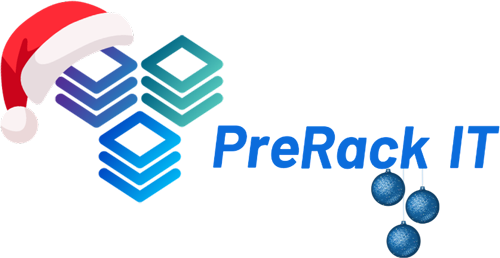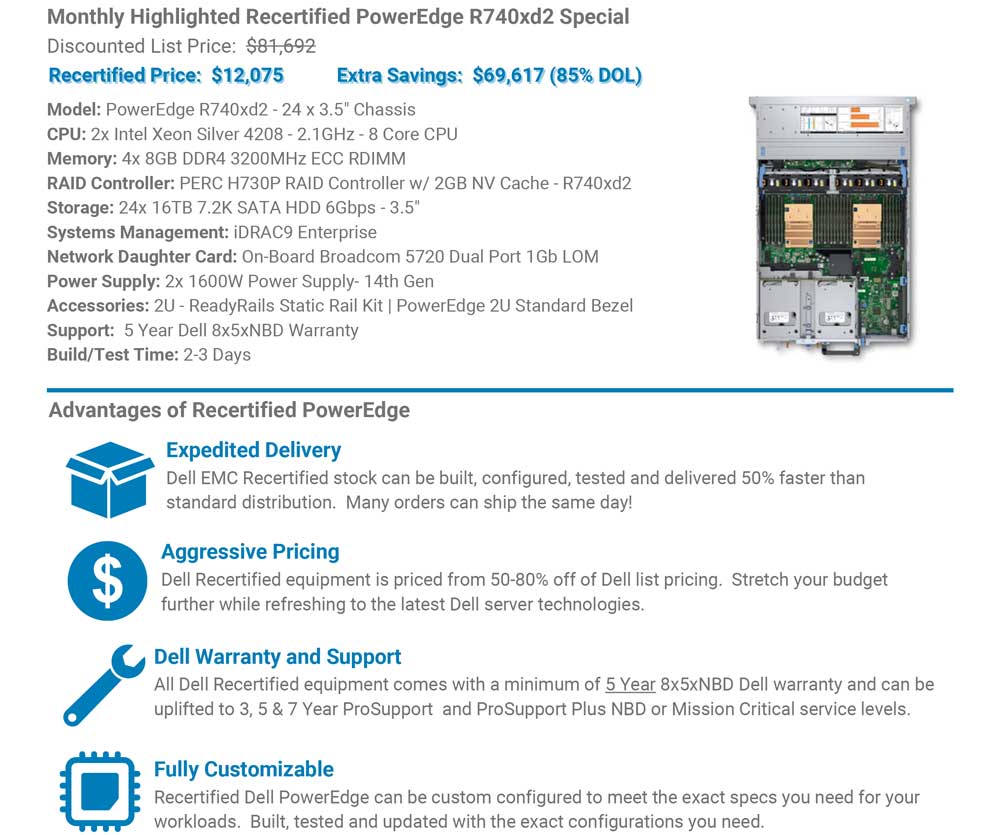Unraveling the EMC Unity GEN 1 EOSL Confusion
In the fast-evolving world of enterprise storage, Dell EMC Unity has established itself as a reliable workhorse. But as GEN 1 Unity arrays approach their End of Service Life (EOSL), IT decision-makers face a wave of confusion and concern. What exactly is the EOSL date for GEN 1 models? What happens when Dell support runs out? How can organizations balance budget, risk, and operational needs? Let’s unravel the EOSL maze and spotlight practical next steps—including leveraging third-party support options provided by companies like PreRack IT.
What Is EMC Unity?
EMC Unity is a family of midrange storage solutions designed by EMC (now part of Dell Technologies) for modern data center needs. It combines hybrid and all-flash arrays with simplified management, VMware integration, and efficient data reduction.
Unity systems are widely used across industries for workloads like:
- Virtual machines
- File storage
- Block-based applications
- Database systems
Unity’s popularity comes from its ease of use, affordability, and performance. However, even the best systems reach a point where official support is no longer available.
Understanding EOSL: The Basics
End of Service Life (EOSL) denotes the date after which the original equipment manufacturer (OEM) no longer provides support, patches, or maintenance for a hardware product. EOSL is distinct from:
- End of Life (EOL): The last date to purchase the system from the OEM.
- End of Sale: Sometimes synonymous with EOL, it’s when the OEM stops selling new units.
Once a product reaches EOSL:
- OEM technical support, replacement parts, and firmware updates cease.
- Security, performance, and compatibility risks can increase.
- Third-party support or self-support are the main remaining options.
Why is the GEN 1 EOSL Date So Confusing?
IT leaders searching for the “Unity GEN 1 EOSL date” will quickly notice a lack of clarity—often encountering inconsistent or conflicting information. Here’s why:
1. Multiple Model Variants with Overlapping Lifecycles
The Unity GEN 1 portfolio includes several models (Unity 300, 400, 500, 600, and their flash versions), each with different release dates and often subtle distinctions in official documentation.
2. OEM Announcements Change Over Time
Dell EMC sometimes changes support plans or extends (or reduces) support horizons as new products (like Unity XT or PowerStore) are introduced.
3. Third-Party Resources Contradict Each Other
Various maintenance providers publish their own EOSL tables, often with slight differences due to:
- Interpretation of OEM documentation
- Regional support variations
- Inclusion or exclusion of minor model variants
4. Miscommunication from Channel Partners
Channel sales and support teams may not always have the latest updates, leading to outdated or premature EOSL announcements.
5. Software vs Hardware EOSL
Some confusion stems from whether EOSL dates refer to the hardware platform, the operating environment (e.g., Unity OS), or both.
Overview of EMC Unity Gen 1
EMC Unity Gen 1 was launched in 2016, intended to replace older VNX and VNXe models. It introduced a sleek, modern interface and unified file/block storage. The Gen 1 models include:
What Happens When You Hit EOSL?
When a system reaches its EOSL date, Dell Technologies:
- Ceases firmware and software updates
- No longer provides technical support
- Ends parts replacement services
- Offers no guarantees on compatibility with other new infrastructure
Essentially, your Unity array becomes a “use at your own risk” system.
This doesn’t necessarily mean the hardware will stop working—but you will no longer have OEM backing in case of downtime, failure, or security issues.
Risks of Running Unsupported Equipment
While some organizations choose to ride it out, unsupported hardware can bring serious risks:
- Downtime: No replacement parts or responsive service means you may face prolonged outages.
- Security: Unpatched vulnerabilities can expose your data to breaches or ransomware.
- Compliance: Industries like finance or healthcare may face violations if running unsupported systems.
- No Scalability: Without support, scaling storage becomes risky and complex.
Many businesses hesitate to replace hardware that still works, but they also don’t want to risk operational disruptions. That’s where third-party support enters the picture.
Why PreRack IT Is Your Ideal Support Partner
At PreRack IT, we specialize in keeping your infrastructure running long after the OEM steps away.
If you’re currently running EMC Unity Gen 1 systems and you’re unsure what to do now that Dell support has ended (or is about to), we offer a simple, cost-effective solution: Third-party maintenance (TPM) tailored to your Unity environment.
Benefits of Choosing PreRack IT:
- ✅ Support beyond EOSL
- ✅ Access to certified Unity engineers
- ✅ Affordable SLAs compared to OEM renewal quotes
- ✅ Rapid replacement parts delivery from our global supply chain
- ✅ Flexible contracts (monthly, annual, multi-year)
- ✅ U.S.-based 24/7 technical support
We fill the gap between manufacturer support ending and your next hardware upgrade.
8. What Third-Party Support from PreRack IT Includes
You don’t have to give up high-quality service just because Dell has ended their coverage. Here’s what’s included in PreRack IT’s Unity Gen 1 support plans:
🛠️ Certified OEM Parts Replacement
We provide fast parts replacement from our stocked warehouses. You’ll have peace of mind that downtime won’t paralyze your business.
📞 24/7 Help Desk
Talk to real engineers—no long wait times or tiered escalations.
🔍 Remote Support
We identify and fix problems quickly using secure remote troubleshooting tools.
📅 Predictive Maintenance
Using system logs and performance data, we proactively identify failure risks before they happen.
🔧 On-Site Technicians (as needed)
In critical scenarios, we dispatch experienced engineers directly to your location.
PreRack IT turns EOSL chaos into confident continuity.
Cost Savings: OEM vs. PreRack IT
One of the biggest benefits of moving to PreRack IT is cost savings. Dell’s support pricing often becomes steep as equipment nears end of life—if it’s even offered.
PreRack IT offers:
- Lower TCO for multi-year support
- No surprise fees
- Custom SLAs that match your risk tolerance
Our clients report up to 60% savings compared to OEM support renewals or forced hardware refreshes.
If your system is still performing well, there’s no need to rip and replace just because a calendar date passed.
Ready to Extend the Life of Your EMC Unity?
Contact PreRack IT today to receive a personalized Unity Gen 1 support quote and consultation. We’ll walk you through your options and help you make the most of your existing investment.
👉 Live chat or call us at (404) 436-1241.



